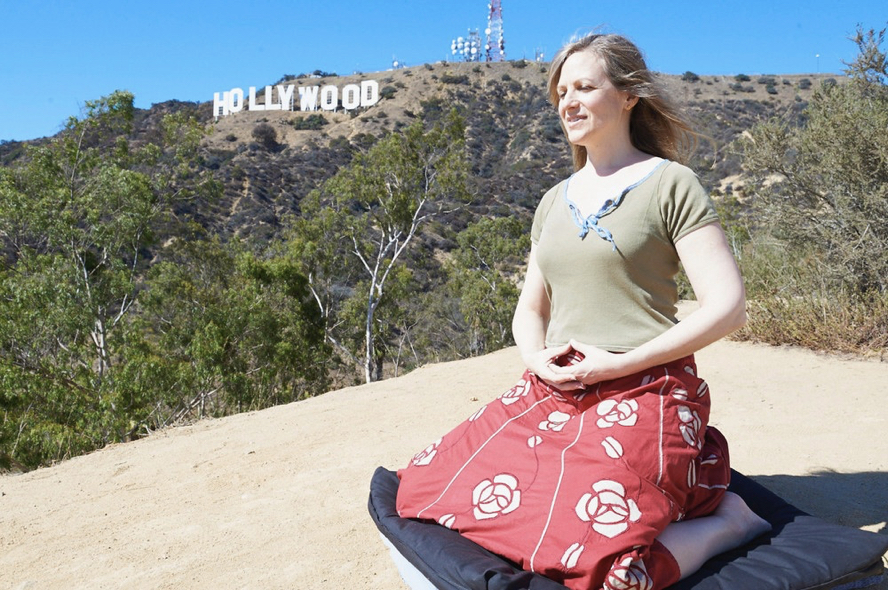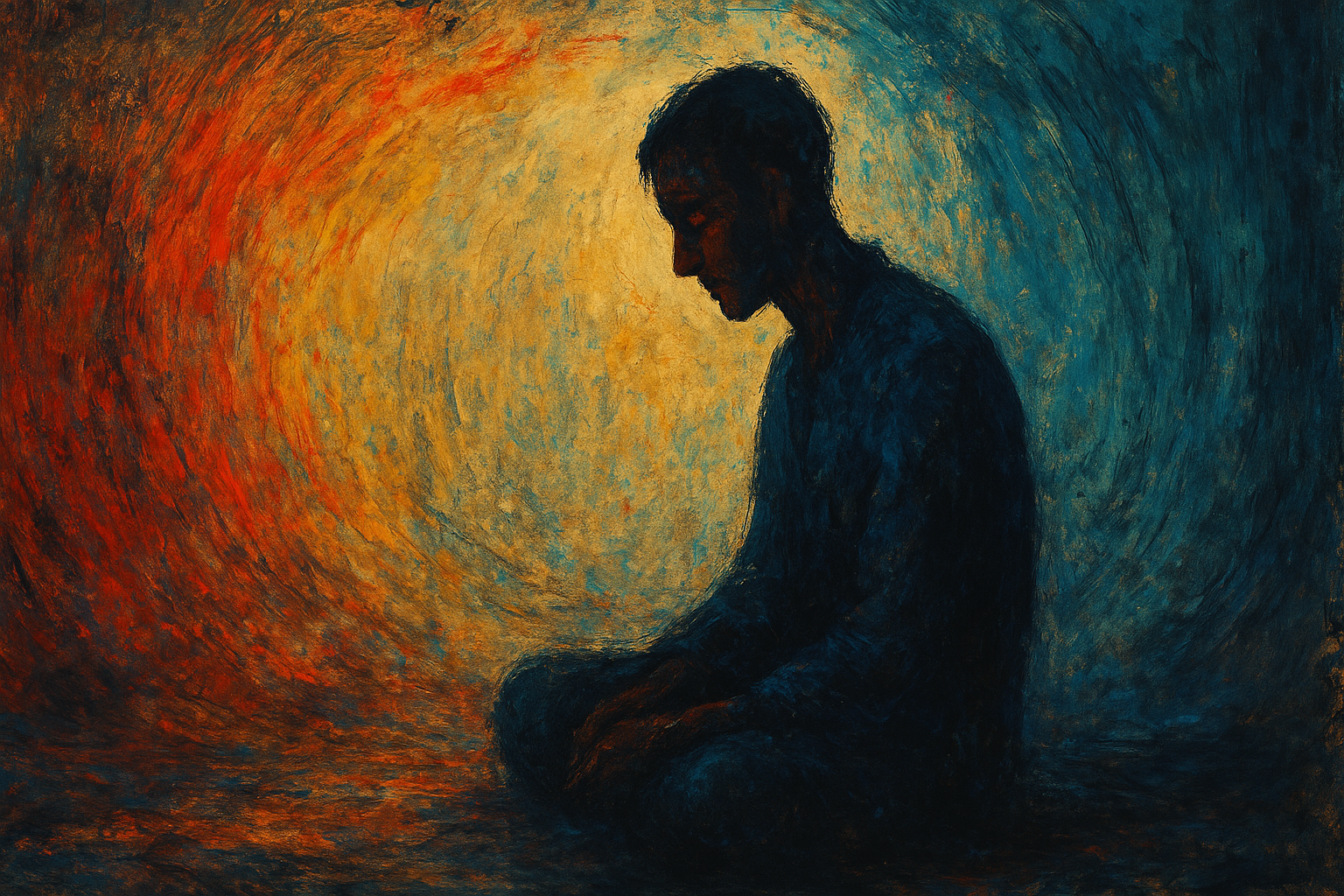When I was a little girl, I used to sit cross-legged in my grandmother’s walk-in closet, close my eyes and chant “OM” to myself over and over. I didn’t really understand what I was doing, but I knew that meditation offered a more peaceful life, and at the age of eight I was already craving serenity.
My childhood interest in meditation didn’t last very long, and I wouldn’t return to it until decades later. Meditation apps were suddenly the hot thing a couple years ago, so I decided to give a few of them a try. I had no issues with any of the apps I tried, but once again I failed to develop a regular meditation practice.
If you’re anything like me, you may be drawn to meditation for its well-known benefits, but you find it too “out there,” too vague, too difficult to grasp. Am I doing it right? What’s supposed to be happening?
This is not unusual. As Julianna Raye, founder, president, and head trainer of Unified Mindfulness, explained to me, “Meditation is tricky because initially results can be subtle, and oftentimes people are confused. There are lots of things that can interfere with your ability to adopt a solid practice. The mind can come up with any little reason to say no, because we’re used to our routines.”
Through speaking with Raye and going through the Unified Mindfulness online training course, everything finally started to click for me. Or, as Raye puts it, the Unified Mindfulness system “throws the doors open” for people like me. And perhaps you.
So, let’s dive in…
Julianna Raye’s Story
An accomplished singer/songwriter, Julianna Raye has released three albums, toured extensively and collaborated with many big names in the music business. But there’s much more to her story.
Before she began practicing meditation, Raye suffered from anxiety and depression. At one point, she was suicidal—in the planning stages, even. Therapy was not enough, and Raye didn’t react well to anti-depressants, so medication was not an option. A concerned therapist recommended meditation.
“When I discovered mindfulness, the big revelation was that it changed me in a physiological way,” Raye told me. “I didn’t expect the rewards to be so tangible.”
Raye continued: “As I got deeper into it, I began to see a pattern interrupt. For me, I found that the anxiety and depression were conditioning. Mindfulness was the key to breaking through the spell of my conditioning.”
Two years after beginning her practice, Raye found a life-changing teacher in Shinzen Young, the architect of Unified Mindfulness. She began going on retreats, which took her practice to the next level.
“I discovered just how good I was capable of feeling,” she says. “It meant that I could rely on my own inner capacity to self-generate well-being and pleasant experience, and that’s very freeing.”
Raye rose above her depression through immersion in mindfulness, including more than 100 weeks of silent retreat training and over 12,000 hours of formal practice. “I recognized that if I didn’t do this, I was going to live life chronically managing my unhappiness and dipping deeper and deeper over time into that pit of depression,” Raye revealed. “So, I gave it everything I had, and it took a lot of time and a lot of focus, but I came out the other side totally transformed.”
Now Raye is dedicated to empowering as many people as possible with the tools that have been so transformative for her. As a result, she has been training individuals and groups in the Unified Mindfulness system for nearly two decades. Raye’s vision, as she puts it, is “to do everything I can while I’m on this planet to help people help themselves the way I’ve been able to help myself.”
So What is Unified Mindfulness?
If you like things spelled out for you, Unified Mindfulness may appeal to you. It’s a perfect place to start if you’re new to mindfulness, but those with established meditation practices can learn from it as well.
The system defines mindfulness as a set of three attention skills, all working together. These skills are developed through a consistent meditation practice, but they can also be cultivated during everyday experiences. Raye walked me through the three skills using the example of brushing your teeth.
- Concentration power: Quite simply, this is the ability to focus on whatever sensory experience you choose. If you were brushing your teeth, you would choose to focus your attention on that action and let everything else fade into the background. Doing so strengthens your ability to concentrate in general, helping you focus on what you consider to be most important at any given time.
- Sensory clarity: This is the ability to track and explore sensory experiences in real time. While brushing your teeth, you might notice the texture of the toothpaste and then the tingle of coolness in your mouth. Our ability to detect this sensory information enriches our life. Raye described it as similar to a chef tasting the flavors of a stew. We become the chef of our own sensory experience. When you achieve this clarity, ideas may come to you more clearly, and you can make links of association that you wouldn’t ordinarily make—much like when you’re in “the zone” at work or while playing a sport. Sensory clarity also helps us manage challenging experiences by reducing sensory clutter.
- Equanimity: This is the ability to allow sensory experiences to come and go freely, without interfering with them in any way—without trying to hold on to the experience or trying to push it away. Raye explained that we tend to fight with our inner experience, often without realizing it. When we do, we make matters worse for ourselves by expending precious energy. Equanimity allows us to better process unpleasant experiences and gain deep fulfillment from pleasant experiences. When we learn how to permit an experience to come and go, then a little hint of joy has an opportunity to spread and possibly gain momentum throughout the whole body. Like the simple joy of focusing on brushing your teeth for just a minute or two!
Unified Mindfulness also teaches methods for meditation, such as the “See, Hear, Feel” technique. Raye notes, “Once you understand that it’s about skill development, then you can explore what works for you. We like to lead with See, Hear, Feel, because it’s a great way to show people firsthand that any experience at all can be a meditation. But it’s a very easy leap from this technique to another technique that they might love.”
Does Unified Mindfulness Produce Results?
The facts are in: Using more than 50 years of research and testing, Shinzen Young designed an approach to mindfulness that is comprehensive, rigorous and stands up to scientific inquiry. The Unified Mindfulness system is used by leading institutions such as Harvard and Carnegie Mellon for their research on meditation.
And the American Psychological Association (APA) recently reported on a study where Raye trained employees at a digital marketing firm in the Unified Mindfulness system. This was the first study of its kind to research how mindfulness impacts subjects during their workday.
According to the results, participants who received the half-day training and practiced mindfulness daily for six weeks “showed reduced work-life conflict, increased job satisfaction, and an increased ability to focus their attention.”
I asked Raye about the application of Unified Mindfulness in recovery. “Mindfulness is not a replacement for 12-step programs, but it’s a wonderful complement,” she responded. “There’s a vicious cycle that happens when we get caught up in negative thinking and emotions. Being able to manage that is very helpful—you’re less likely to turn to a substance because you’re able to better manage the overwhelm. On the flip side, as your practice evolves and you’re experiencing greater fulfillment, you start to have a virtuous cycle where these pleasant rewards mutually reinforce each other in a healthy, healing way, and that can be really stabilizing.”
As someone who quit drinking nearly two years ago, I have been longing to institute a mediation practice to sustain and enrich my recovery.
After taking the 10-part CORE Training, which is the first step in learning the Unified Mindfulness system, I’m eager to sign up for the 30-day action plan next. I may even do their teacher certification program once my practice is well established.
I’m also excited to check out the Unified Mindfulness online summit and retreat coming up in March (if you sign up for the CORE Training you’ll receive updates on this event). In addition to interviewing experts in various fields who credit meditation as a meaningful part of their life, Raye and her colleagues are holding an online meditation hall that will be open for 12 hours a day over five consecutive days. Beginners can stop in for a session or two, while those who have been considering going on a retreat may want to try a full day.
Not since I was a child sitting in my grandmother’s closet have I been so hopeful about the prospect of meditation in my life. But this time around, I have a sturdy foundation providing valuable and proven support.



